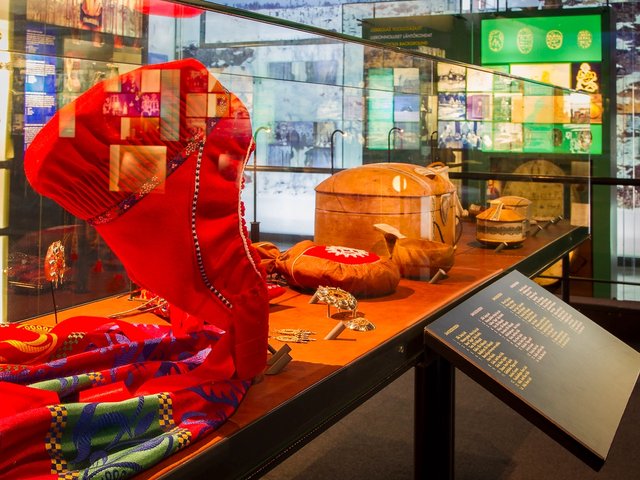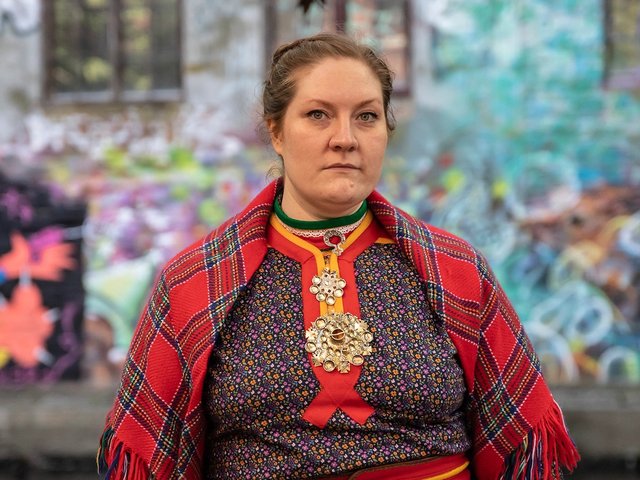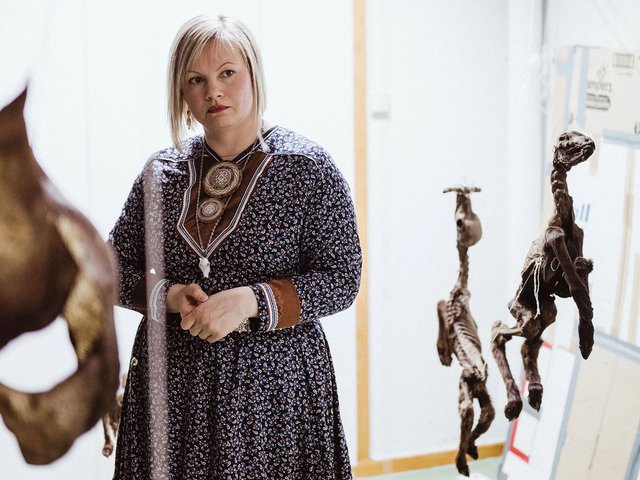The Northern Sámi artist Máret Ánne Sara—who explores political and ecological issues affecting the Sámi and Indigenous communities of northern Norway—will take over Tate Modern’s Turbine Hall this autumn (14 October-6 April 2026). Sara will create the next Hyundai Commission in the vast cathedral-like space that has previously hosted works by artists such as Kara Walker, Cecilia Vicuña and Olafur Eliasson.
Sara is from a Sámi reindeer herding family in Guovdageaidnu in the Norwegian part of Sámi. This territory, home to around 50,000 Sámi people, is divided between the nation states of Norway, Sweden, Finland, and Russia.
“Through her multidisciplinary practice, Sara highlights the impact of Nordic colonialism on Sámi ways of life, exploring the importance of preserving Sámi ancestral knowledge and values to protect the environment for future generations,” says a Tate statement. Sara creates sculptures and installations using materials and methodologies derived from reindeer herding, adds the museum.
Sara told The Guardian: “There’s a different way of thinking and being between an Indigenous perspective and a typical Western orientation. For us, the reindeer is actually a very close relative. Humans, nature and animals are interdependent and equal.” In 2017, Sara showed a “curtain” made of 400 bullet-riddled reindeer skulls outside the Norwegian Parliament (Pile o´Sápmi Supreme) in protest at the former government’s policy of culling the reindeer population.
In 2022, she was one of three Indigenous artists who represented Finland, Norway, and Sweden in an unprecedented Sámi takeover of the Nordic pavilion at the Venice Biennale. Sara presented the sculpture Ale suova sielu sáiget (2022) made of cured red reindeer calves, cotton grass and birch branches.
Tate Modern director, Karin Hindsbo, said last year that “there will be a stronger focus on Indigenous artistic practices”. The next Turbine Hall artist choice chimes with existing trends as more and more museums and biennials worldwide focus on Indigenous art and heritage.
Hindsbo adds in a statement: “By addressing the major social, ecological and political concerns of her community, Sara hopes not only to increase interest and awareness, but also to effect real change.” Hindsbo was previously the director of the National Museum, Oslo, which owns the piece Pile o´Sápmi Supreme.
Last year, Tate launched a fund which aims to increase the representation of Indigenous works in its collection. The fund is backed by the AKO foundation, a charitable trust established in 2013 by the Norwegian businessman Nicolai Tangen.
In a funding coup, Tate and Hyundai Motor have also announced a decade-long extension of the sponsorship partnership, which covers the Hyundai Turbine Hall commission and the Hyundai Tate Research Centre: Transnational until 2036.
The centre shares art historical knowledge worldwide. “The word ‘transnational’ encourages us to challenge and revise dominant art histories. It highlights global exchanges and the circulation of artists and ideas,” says an online statement.





